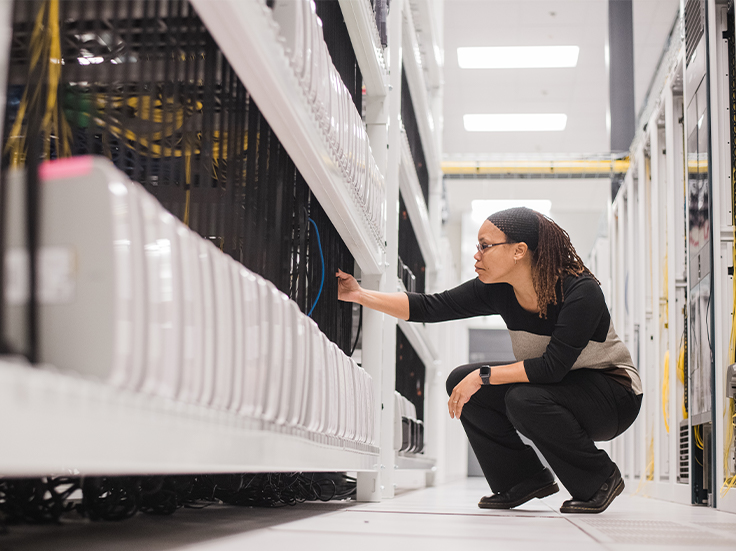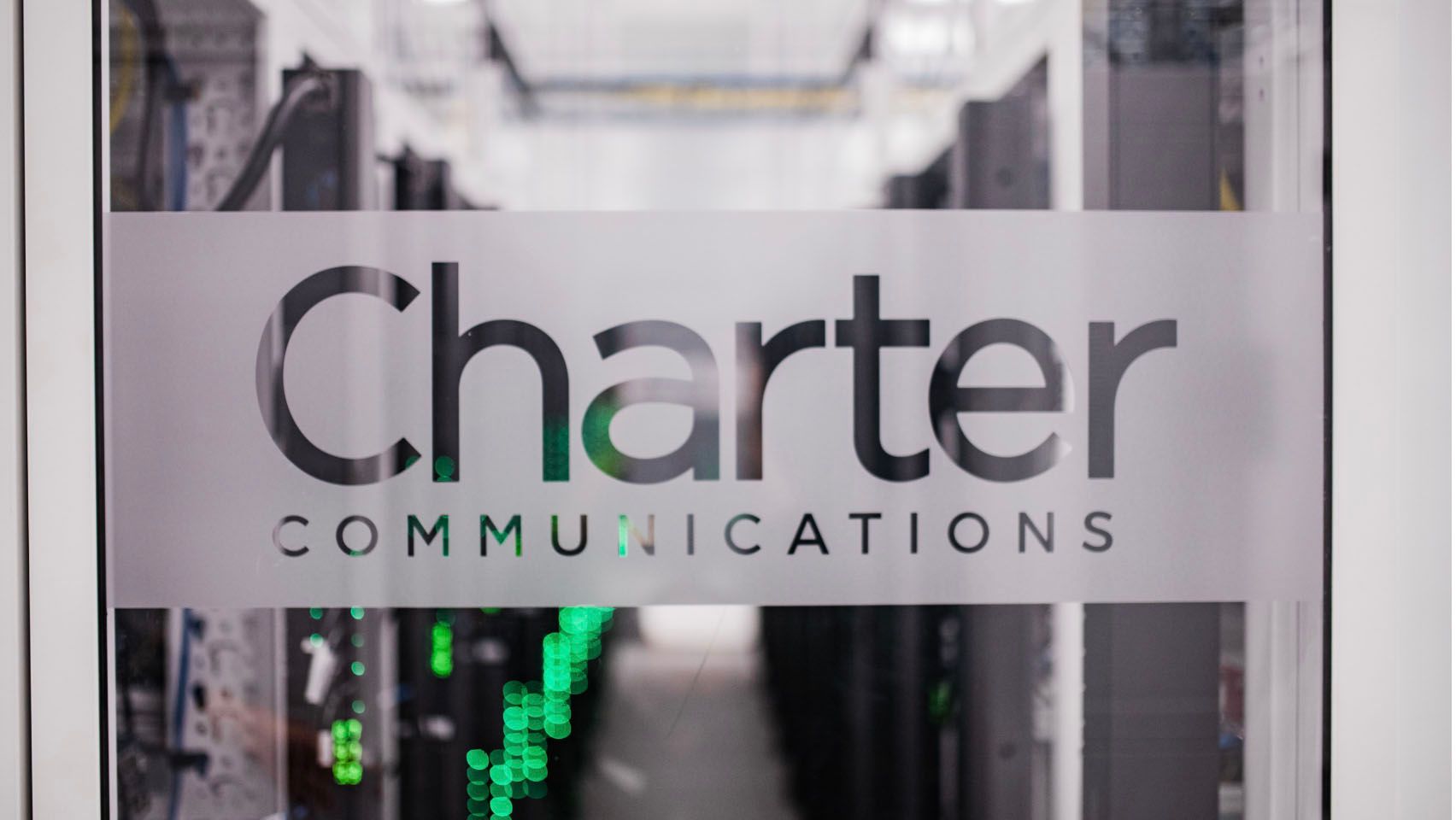News and ViewsApril 13, 2020
How Charter is Meeting Higher Demand for Reliable Internet During COVID-19 Crisis
A Q&A with Chief Technology Officer Stephanie Mitchko-Beale
Share Article:
The COVID-19 pandemic has focused attention on America’s broadband backbone like no other national emergency in recent memory. Never before have so many Americans been so dependent on their home internet connection.
As more people work and learn remotely, stream movies and video chat with friends, family and coworkers, Charter’s advanced broadband network is ready to meet the growing demand for reliable internet. We chatted (virtually) with Stephanie Mitchko-Beale, Charter’s Executive Vice President and Chief Technology Officer, to learn more about what Charter is doing to ensure its network continues to perform well, steps the company is taking to meet the shifting needs of homebound customers, and how it’s supporting critical institutions like hospitals and government agencies during the pandemic. Her answers are below:
How Has Charter's Network Been Impacted by This Crisis?

Thus far we have seen a substantial increase in network activity, particularly in the daytime, with more people working and learning from home. Since the crisis began in late February we’ve seen peak demand on our network increase nearly 20 percent on downstream traffic, and 32 percent on upstream traffic. This is consistent with what other cable operators are seeing.
In many households daytime internet traffic has doubled, even tripled from pre-pandemic levels; however, peak demand continues to be during the primetime TV-viewing hours, 8-9 p.m. The demand on both the downstream and upstream traffic is driven by streaming video applications. We also have seen a substantial increase in the use of other applications in the past month for remote work. The use of video communications services such as WebEx, Zoom and Skype has increased, and downloads of video games have more than doubled in the past month.
Additionally, we are seeing a shift of mobile phone traffic coming off cellular networks and moving to our in-home WiFi networks. What that means is our wired and WiFi network is being heavily used by laptops, mobile phones and tablets from people working from home and learning online in addition to connected TVs, devices and gaming consoles.
Through all of this, our network continues to perform well on the downstream and upstream. We built our networks to exceed maximum capacity during peak evening usage, and even with the increased network activity we are seeing in the daytime – especially in areas with larger COVID-19 closures – levels remain well below capacity and typical peak evening usage in most markets.
How Prepared Was Charter to Meet the Increased Demand for Internet?

As one of the nation’s largest internet service providers, our advanced broadband networks serve nearly 30 million homes and businesses, including in some of the country’s largest metro areas like New York, Dallas and Los Angeles. Millions depend on Charter’s internet service as a critical lifeline to their home or business. We talk to our customers every day, and we know first-hand the important role our services play in their lives. We were well positioned to meet the shifting demand for internet usage brought on by the COVID-19 pandemic.
We’ve invested $40 billion over the last five years in new technology and network upgrades. This includes investments in our fiber backbone, and customer-facing projects like Charter’s recent conversion to all-digital, which freed up capacity in our hybrid-fiber-coaxial network. These investments ensure that even in times of crisis we can deliver exactly what our customers need – reliable high-speed internet with enough capacity to support even the most high-bandwidth activities, such as HD video streaming and multi-player gaming on numerous devices.
What is Charter Doing to Ensure it Continues Providing Reliable Internet?

We monitor our network constantly so that we can add capacity in areas where we see the potential for network congestion, or to provide additional support for critical services, such as first responders, hospitals and government agencies.
What’s more, Charter literally has tens of thousands of front-line employees on the ground throughout the 41 states where we operate. They are monitoring and maintaining over 750,000 miles of physical network infrastructure, which includes the thousands of hubs and neighborhood-level nodes that deliver our services to the home or business, and completing over 10,000 daily jobs to ensure our network continues to perform well. In the event of an unplanned outage caused by severe weather or loss of commercial power, our technical teams in the field are poised to respond immediately to repair any damage and to restore critical services as quickly as possible.
This constant monitoring and backup support is standard operating procedure for Charter, even in non-emergency times. We train regularly for worst-case scenarios and disaster situations, and we constantly review our business continuity plans to ensure we continue to deliver uninterrupted internet, phone and TV services to our nearly 30 million customers, including critical institutions. This is what we do every day.
How is Charter Supporting First Responders and Critical Institutions?

Because our employees are embedded in the communities we serve, we have a strong relationship with essential institutions like local hospitals, police and fire departments and government agencies, and we are doing everything in our power to support them in this crisis.
In one major city, our Spectrum Enterprise team delivered a fiber connection to support the city’s informational technology department, which provides the core IT infrastructure supporting that city’s agencies working to confront the pandemic.
Charter’s teams mobilized to install Spectrum TV service aboard the USNS Comfort, the Navy hospital ship that was brought to New York City to relieve pressure on the local hospitals, and the USNS Mercy, which is supporting hospitals in Los Angeles.
Additionally, Charter provided connectivity upgrades at more than two dozen healthcare facilities across the country, many of which were completed in under 24 hours.
I think I can speak for all of our 95,000 employees when I say Charter is extremely proud to serve these critical institutions at this crucial time in our history.
What is Charter Doing to Connect More People to the Internet?

Charter is committed to helping ease the strain in this challenging time, particularly for students who will rely on distance learning and for those who face difficult economic circumstances because of the coronavirus pandemic.
First, we are increasing access to broadband for K-12 students, college students and educators by offering free Spectrum Internet service for 60 days if they don’t already subscribe to Charter’s services. We have seen strong demand for this offer and many who were not previously online are now connected to the internet through this program. Additionally, we are partnering with school districts to ensure local communities are aware of these tools to help students learn remotely.
Charter has pledged not to terminate service or charge late fees for residential or small business customers who face difficult economic circumstances related to COVID-19. Charter also will continue to offer Spectrum Internet Assist, our high-speed, low-cost broadband program for eligible low-income households.
To help people who are required to work outside the home, or must undertake essential travel, we have opened our WiFi hotspots across our entire footprint for anyone to use. These hotspots are available at nearly 530,000 locations nationwide. More information about how to connect to Spectrum WiFi hotspots, or to view a map of locations, is available at www.spectrum.net/support/internet/spectrum-wifi. We also continue building out our network to reach more homes and businesses, expanding at an average rate of 1,500 new locations passed each day.
This is an unprecedented situation, and things are shifting quickly. We are watching the situation – and our network – closely and are poised to adjust resources as needed to provide the reliable internet and essential services our customers depend on.
